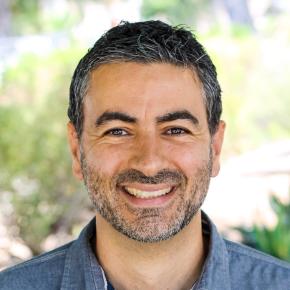It is commonly believed that efforts to help people change their unwanted same-sex attraction (SSA) are unsuccessful. The problem is that professional therapy outcomes are lumped together with outcomes of accountability, prayer, and pastoral counseling. Consequently, if pastoral counseling and prayer appear to have no effect on a person’s attractions, it’s declared that people can’t change and all efforts to help someone change are ineffective. This has led to a lot of confusion.
That’s why the Alliance for Therapeutic Choice and Scientific Integrity (ATCSI) is taking action to clear up this confusion. They are the leading scientific group of psychologists, psychiatrists, physicians, and other licensed clinicians who help people with unwanted SSA and/or other related psychological symptoms.
This group of clinicians is frustrated with the current crop of terms used to describe their work: conversion therapy, reorientation therapy, sexual orientation change efforts (SOCE), and a few others. To more accurately and effectively communicate the work that these therapists do, the ATCSI adopted a new term: Sexual Attraction Fluidity Exploration in Therapy (SAFE-T). I attended their national conference and heard them make the announcement. They offered many reasons for implementing this new language, but I’ll mention just a few.
- The older terms do not differentiate between professionally conducted psychotherapy and other efforts like religious counseling, prayer, support groups, etc. The ATCSI wants to make it clear that what they are doing is fundamentally different from the family or religious support that often accompanies their services. They’re not opposed to social support but simply want to distinguish what they do from what clergy, friends, and family offer.
- The older terms presume that sexual orientation is a fixed part of a person’s identity. That is, some people have a homosexual orientation, some people have a heterosexual orientation, and these conditions are immutable. ATCSI rejects that proposition and their new term avoids “orientation” language.
- SAFE-T uses the phrase “Sexual Attraction Fluidity,” which is consistent with the current state of research that indicates sexual attraction is indeed fluid (Dr. Katz-Wise, 2015; Dr. Diamond, 2016).
- The older terms imply that the goal of therapy is for the client to experience a categorical change from exclusive SSA to exclusive opposite-sex attraction (OSA). This is problematic for a couple of reasons. First, such an outcome is statistically rare and creates an unrealistic expectation for the client. Second, this degree of change is not normally demanded as proof that legitimate psychological care has been provided for other psychological conditions. Patients treated for depression, for example, aren’t expected to change from 100% depressed to 0% depressed. The amount of therapeutic success falls on a continuum, and many patients find change that is less than categorical to be meaningful and satisfying.
- The older terms imply ATCSI clinicians are practicing some unique and mysterious type of therapy. In reality, psychologists who practice SAFE-T are practicing mainstream therapeutic modalities used by all kinds of clinicians throughout their profession.
- The older terms imply that change is the therapist’s goal and not the goal of the client. Clinicians who practice SAFE-T, however, adhere to their profession’s standards of client self-determination. There is no coercive element on the part of the clinician. The patient sets the goals and the therapist helps him or her achieve them. The ATCSI believes it is unethical (and ineffective) for a therapist to impose his or her goals on the client.
In addition to the new term, a group of ATCSI clinicians is conducting a five-year longitudinal study to evaluate the effectiveness of SAFE-T. They’re just over three years in the process, and the preliminary results are promising. Once published, this study will add to the scientific credibility of what ATCSI clinicians are doing, giving more hope to men and women with unwanted SSA.

